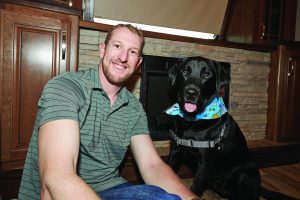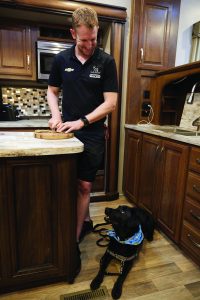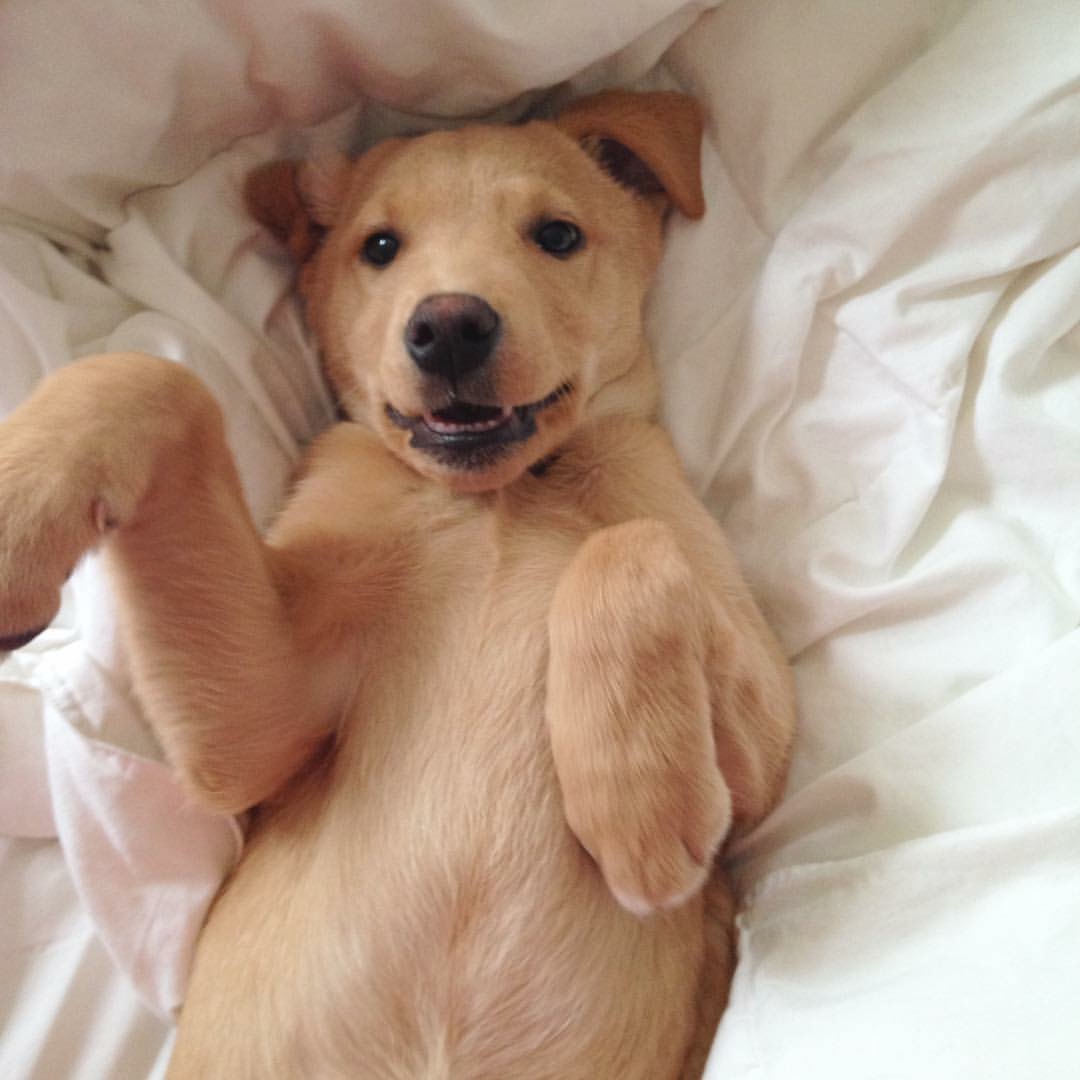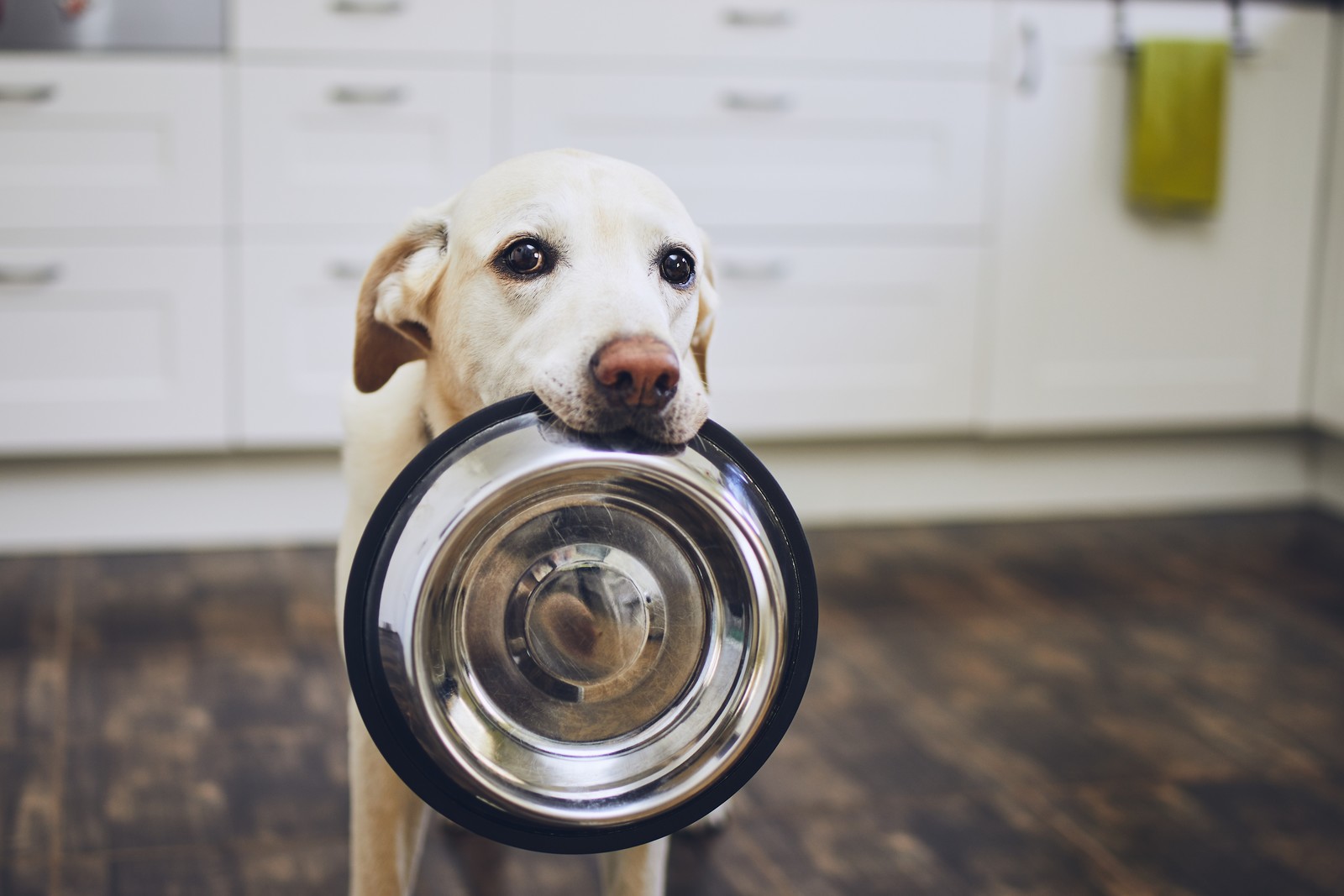Lab helps IndyCar racer manage diabetes
There’s a lot to love about the Indianapolis Motor Speedway each May. Take the mounting anticipation for the Indianapolis 500, one of the world’s most prestigious automobile races, and racecars blurring as drivers practice speeding around the track at over 200 miles per hour. The surrounding city buzzes with festivals, porch parties and music concerts while banners from seemingly every balcony proclaim, “Welcome Race Fans!”
For insiders, one of the track’s most popular sights is a black Lab named Lilah. She works as a diabetic alert dog for Charlie Kimball, the first IndyCar driver with diabetes to ever qualify for and finish the Indianapolis 500, starting with his rookie year in 2011. He went on to finish third in the race in 2015.
“She’s pretty popular around the paddock,” Kimball said. “When she has her jacket on and is working, people know not to play with her, but when we’re just out for a walk in the evening, everyone knows that she loves to get pets and comes up and scratches on her.”
The affectionate Lab started out as a pet, not a service dog. Kimball and his wife Kathleen adopted Lilah from the Indianapolis nonprofit Love of Labs when she was six months old. Though they took Lilah to obedience classes and she passed her Canine Good Citizen test, it became apparent when she was around three years old that she needed a job.
“As Labs are prone to do, she wanted to be working one way or another, so she kept inventing jobs for herself,” he said with a laugh. “She decided she was going to be our alarm system and bark at anyone who walked by. She was going to help us with our gardening by digging big holes for us to plant trees in.”
Their trainer initially suggested Lilah work as a therapy dog. But Kimball, now 34, mentioned he has Type 1 diabetes and asked if she could learn to be a diabetic alert dog. So Lilah went to “boarding school” with Medical Mutts, a company that trains service dogs in Indianapolis.
Her trainer, Jimmy Maxwell, said training Lilah was both a challenge and a joy. He has two Labs of his own and said he has a “huge heart” for the breed.
“Lilah put me through the ringer early on,” he recalled. “She just wasn’t quite sure what was expected from her.”
Once she understood, everything “started clicking.” Using positive training techniques with the food-motivated Lab, Maxwell trained Lilah to alert to the scent of a sweat sample taken when Kimball’s blood sugar was low.
Then it was time to teach Kimball how to work with Lilah, including rewarding her like she’s just “saved the planet” whenever she alerts to his blood sugar fluctuations. Like musicians and video gamers, the racecar driver proved to be a natural with clicker training because of his outstanding hand-eye coordination, Maxwell said.
“His hand-eye coordination not only spells the difference between success and failure, but also at times, life and death,” he explained. “To see that Charlie’s great with Lilah and so good with his timing is not a surprise to me one bit.”
Today Kimball and Lilah, now six, work together like a well-oiled machine. If Kimball’s blood sugar drops to unhealthy levels, the Lab senses it and starts nosing him in the leg. If she doesn’t get a reaction, she’ll bark at him and then go alert his wife.
She’s also trained on the cue “go get Momma” to fetch Kathleen, Kimball’s high school sweetheart, in case his blood sugar is so low that he can’t move to get fruit juice or something else to boost his levels.
“It’s funny, but Lilah gets really excited to tell me that my blood sugar is low,” he said. “I think it comes down to the fact that when she does, she gets top-shelf treats. If we’ve gone out for a steak, or I’ve cooked ribs on the grill, or if we have pepperoni, she gets a good solid food reward. She is 100-percent Lab, and she is 100-percent food driven.”
He noted that though studies have shown a continuous glucose monitor with a sensor can be more reliable than a diabetes alert dog, he’s grateful to have both helping keep him safe.
“If you had to pick a car that had seatbelts, or an airbag, or both, you’d pick both,” he said. “Lilah and all of my other tools in my toolbox work together to make sure that I’m healthy, first and foremost, and then secondly that I can perform as a professional athlete, as a professional IndyCar driver, as someone who is a role model to the diabetes community through Race with Insulin to encourage that next generation of people with diabetes.”
The Lab is also a wonderful family dog. Lilah loves to snuggle on the couch and even tolerates the Kimballs’ toddler Hannah climbing on her “like a jungle gym.” She’s pals with their 15½- year-old husky, Taj, and sweet with Lab puppies the family fosters in the off-season for Love of Labs.
Kimball and Lilah share such a close connection that he’s preparing her for what will be one of the biggest moments of his career. It’s tradition for winner of the Indy 500 to “kiss the bricks” in a certain section of the Speedway.
“She’s practiced for when I win the Indianapolis 500; if I tell her to ‘kiss the bricks,’ she bows down,” he said. “I hope I get to win the Indy 500, and in a way and a time when I can take advantage of her training and get the photo of her kissing the bricks alongside me.”
Follow Charlie Kimball on Twitter: @RaceWithInsulin. For more information about Love of Labs, visit lolin.org. For more information about Medical Mutts, visit medicalmutts.org.
Jimmy Maxwell on Training Labs
Jimmy Maxwell, who trained Lilah through Medical Mutts and is now the training manager at Uptown Pup in Indianapolis, said the key to training Labs —and dogs in general — is using positive methods: rewarding good behavior instead of punishing the bad.
He learned the lesson the hard way after his first dog, a chocolate Lab named Lambeau, essentially shut down while training to be a search and rescue dog; the pooch was too afraid of being punished with an electronic or prong collar to continue. When Maxwell switched to clicker training, the dog bounced back with a new “love for life.” The experience profoundly changed Maxwell’s outlook.
“If we want our dogs to be around us, to cooperate with us, and to have that desire to learn because it’s fun for them, then positive reinforcement training is really the way to go,” he said.
When service dogs are stressed, they can burn out just like humans. Using positive training methods and reinforcement helps extend how long they’ll be able to work before retiring.
Maxwell noted Labs, a common service dog breed, respond particularly well to positive training methods because they are so attuned to humans and eager to cooperate.
“Labs are just really good at it because they want to be part of the family,” he said.
For more information, visit uptownpupindy.com.







